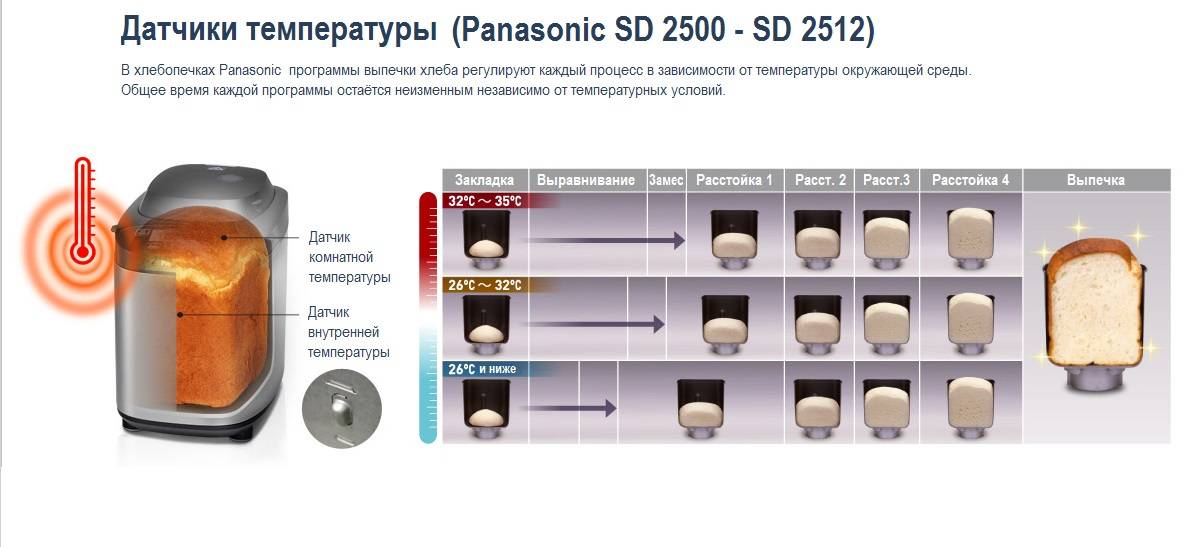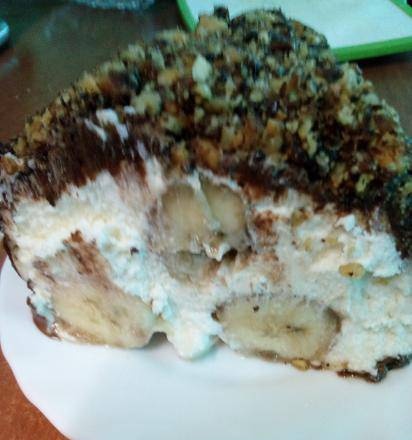fffuntic, wow! Is there some kind of test? I want to buy new ones for Easter cakes - which ones are better suited? Here you also have to take into account that Panasonic has a thick bucket, Redmond has a thin tin.
A thin bucket means it can be overcooked. This means it will be dry with a dark crust. The first time baking will have to be very careful to prevent this from happening. Otherwise the juiciness will be lost !!! Easter cake. You need to get it out of the HP on time and remember the baking time just for your case.
Now about the yeast. All types of yeast don't like being outdoors.
The rule is the same for all of them. We opened the package - they took the yeast, the rest was tightly corked so that contact with air was minimal during storage. At the same time, every time the package is opened, the yeast loses its strength to a minimum. Some are larger, some are smaller. Well, they keep them in the cold. Someone freezes them, but after defrosting they have some kind of restrictions, in my opinion, just for high-recipe sponge buns, but I don't remember, I can confuse what, I didn't freeze it myself, I didn't have to.
Live yeast is checked for germination as follows: in a cup, a pinch of live yeast is poured with water of 30-32 degrees, that is, so that the finger is no longer hot !!!, on the verge. There are a couple of tablespoons of flour and a pinch of sugar, everything must be shaken so that the yeast in the solution disperses, and left for 15-20 minutes.
Yeast must give
necessarily an intense hat.Typically this is done with recipe yeast. And a frothy cap is poured into the dough.
If the yeast is dry. Then they can also be checked. But there is a subtlety here. If you have removed the yeast from the refrigerator, then you must not pour it in right away.
In general, any yeast is a living organism. They don't like temperature changes. If pulled out of the cold, then first you need to hold it in flour in order to warm up and adapt.They must first be tempered for 15 minutes (that is, mixed with flour and left to warm) in a glass of flour. Dry yeast loves dry flour.
And then add water to this chatterbox with flour
hotter... The same subtlety. Dry yeast does not like warm water, and cold yeast generally kills them. In dry yeast with flour, you need to pour 35-40 water (a little hotter than for living ones) so that the finger is hot. Add a pinch of sugar and wait 15-20 minutes for the frothy cap.
This yeast activation is called.
If you look at recipes for any manual kneading, this procedure is always performed there. A frothy cap is put into the cake, that is, the hostess is automatically sure that the yeast will not fail.
In HP this is not always checked and can be a bummer.
You can check the purchased yeast, and then stick it in strictly according to the recipe. But you will definitely be sure that the yeast in the store is not stale. With bread, this is not so important, but if the cake does not rise, it is sad.
That is, if you do not bake on a delayed start, and are not too lazy to activate the yeast, then such a procedure will only benefit any cake.
If you are lazy, then you must first make sure that you bought good yeast by checking it for germination, and then it is advisable not to delay with baking, so that the opened yeast can be used sooner.
It's the right thing to do. You can ignore the rewarming of the yeast, the germination test ... but then you run the risk of running into the trouble of baking failure. It is not so important with ordinary bread, but with cake it will be a pity.
Then I already indicated above that for your bread machine you need to take care of the comfortable existence of yeast in the dough yourself.
For example .. you have kneaded a dough with a final temperature of 24 degrees after complete kneading.It started to rise ... it heats up to 30 degrees for a long, long time, this time the yeast is dormant. Ascent below the planned program. That is, by the end of the cycle, raising your dough will not be normal.
Another thing is that the dough for raising comes out with a temperature of 30 degrees at once. The rise begins from the first minute and by the end of the cycle you will have a completely normal picture if the program had planned exactly this temperature of the dough.
That is, do not be lazy. Take 300 grams of flour and some water .. and make a couple of kneads, watch how the dough heats up and choose the best option for the temperature of the ingredients.
It is important and necessary for you to observe this very delicate balance: the best temperature for yeast dough is 28-30 degrees. At the same time, you cannot knead the dough at this temperature - it will die. That is, you need to knead at a low, and by the end, go to normal, so that the rise begins normally.
You can play it safe. Knead so that the dough by the end of the kneading, going up the rise is 24-26 degrees, this temperature is more favorable for gluten, but then it is necessary to increase the rise time, that is, the cycle. In your case, this is not difficult - a multi-cook will help.
But ... if you use ready-made programs Sdoba, Frenchman, etc. ... you will have to find out exactly the most favorable dough temperature and the amount of yeast for them in order to fit into the schedule.
You do not have temperature control, which already solves this problem for you in Panasonic.
That is, when you make a cake, you will have two subtle points: the initial temperature of the dough and the consistency of the dough.
Depending on the initial temperature of the dough at the time of reaching the first rise, the time of the complete cycle will depend on you. And the same with the consistency of the dough. This first time, you will have to control all stages. Do not start baking until the dough rises normally +
before the last proofing, after the last kneading in your opinion, stir the dough with additional handles and smell. There should be a very pleasant smell. If you smell damp ... hold on for more. For proofing, that is, for the last increase by 1.5-2 times in the mold after the last kneading, the dough should already come out with a pleasant tasty smell. Well, rather .. it would be desirable. It tastes better.
Check out the density of the dough at this moment. It should already hold its shape. If a full slurry .. you need to mix.
But many people just follow the rise of the Easter cake. Two lifts 1.5-2 times. Then molding and the last rise in the mold is also 1.5-2 times. Well, as if I did it with pens.
In tracking the climb ... I think you can handle it.
But the consistency is more complicated. Again, you need to check out the dough at the time of the last kneading. How liquid it is. If something is alive and keeps its shape, then there is nothing to worry about. But if even then there will be a slurry ... then it is necessary either to lengthen the cycle, but it is better to knead it with the handles, or to do the additional mixing in the typewriter, and for the future it is necessary to understand that it is necessary to knead it thicker.
Before going out to mold the slurry, you will be given a lowered dome. The dough is ready for molding, which keeps its shape, in bubbles. This is perfect.
If you do it in a multi-brew .. you can remember all the stages and then it will be easier.
=====
Can be made even easier in a multi-cook. Make settings like in Panasonic.
Pay attention to Natasha's post
I came across such an explanatory picture

Link to better picture
🔗
That is, the dough comes out in Panasonic !! for kneading at 26 degrees. And then!! kneading, it was 29-30 degrees in normal mode. These are the ideal parameters for Panasik. He kneads very carefully. In French, the temperature of the dough is 28 degrees after mixing.
Try to navigate these temperatures when adjusting the modes.
then main mode parameters
kneading 22 minutes
rest 3 minutes
kneading 6 minutes
first rise 60 minutes
wrinkle
second ascent 20 minutes
wrinkle
proofing 50 minutes
baking 50 minutes
==========
Knead according to the recipe. And then you begin to follow each stage and adjust for yourself.
But to use your automatic built-in programs, you have to research HP
make it complete
Well, and the last Elena Bo explained her bookmark in this recipe. If you decide to directly customize the author's recipe for yourself, it will come in handy.
If you are using dry yeast and you have a bread maker with a yeast dispenser, then yeast is in it. If there is no yeast dispenser, then dry yeast at the bottom of the bucket. Then flour and then everything else according to the recipe.
If you use live yeast, then flour first, then everything dry, liquid and live yeast.
just do not allow direct contact with oil, salt and sugar (yeast loves sweet water, but not sugar concentrate or dry sugar)











